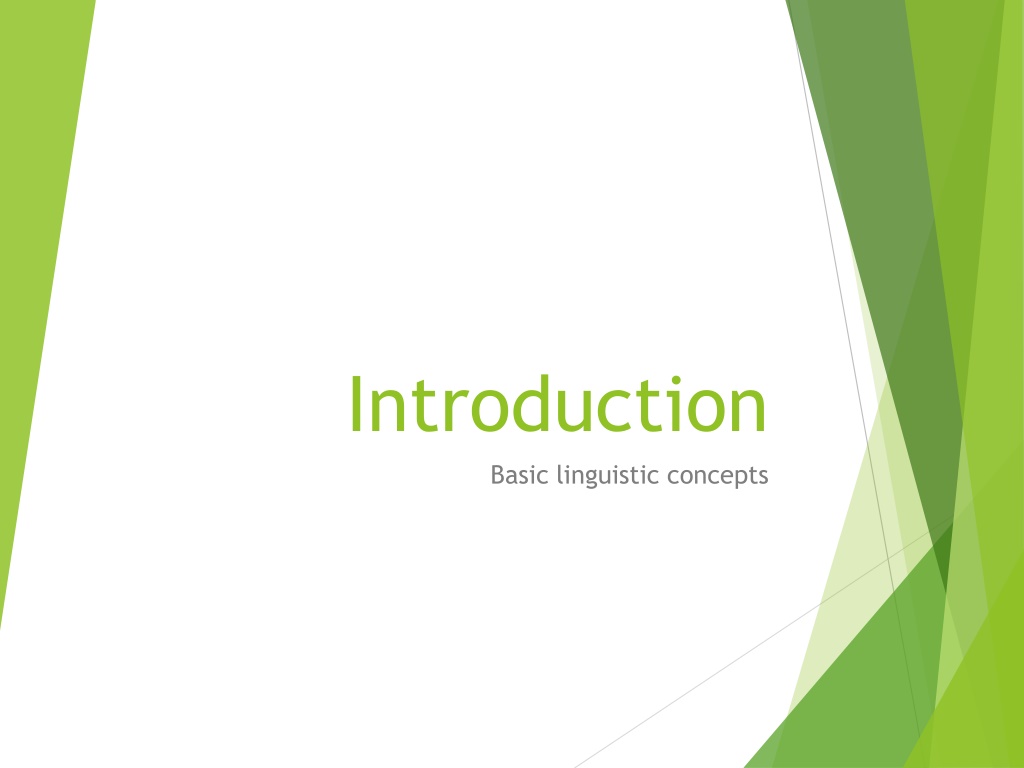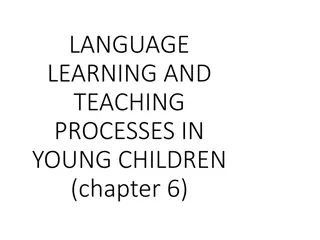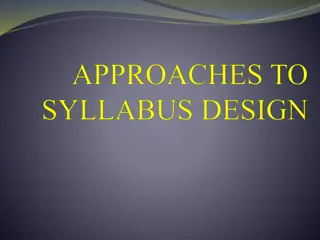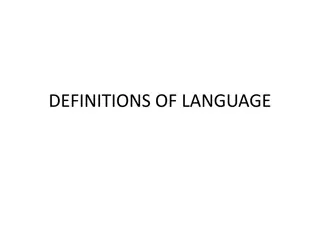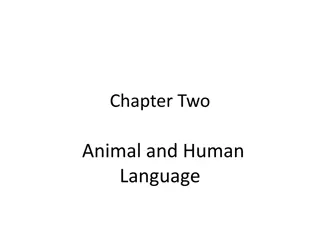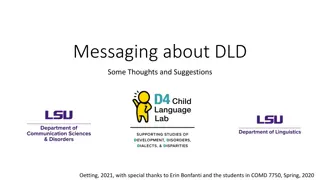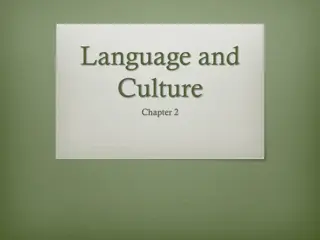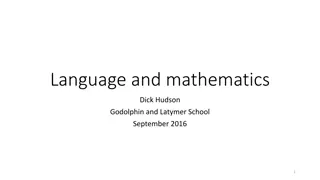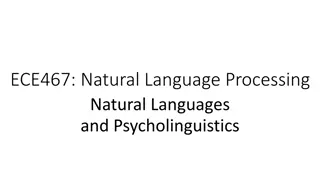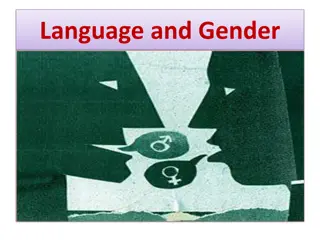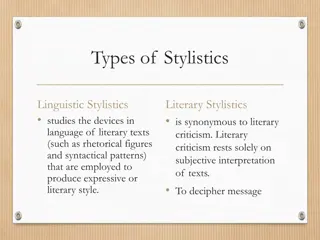Understanding Linguistic Concepts and Unique Aspects of Human Language
Exploring the fundamental concepts of linguistics such as phonology, morphology, and syntax, along with the distinction between prescriptive and descriptive grammar. Delving into different kinds of ungrammaticalities and the properties that make human language unique, including displacement, arbitrariness, productivity, and cultural transmission.
Download Presentation

Please find below an Image/Link to download the presentation.
The content on the website is provided AS IS for your information and personal use only. It may not be sold, licensed, or shared on other websites without obtaining consent from the author. Download presentation by click this link. If you encounter any issues during the download, it is possible that the publisher has removed the file from their server.
E N D
Presentation Transcript
Introduction Basic linguistic concepts
What is linguistics?
Goal of Linguistics Competence Phonology Morphology Syntax etc... Hypothesis Observation Data Collection Performance Prescriptive Grammar vs. Descriptive Grammar
Different Kinds of Ungrammaticality 1. I aksed you that before! 2. That is a great idear! 3. It ain t true at all! 4. *I walks to the park everyday!
Different Dialect Long Island Medium Threesa Caputo: https://www.youtube.com/watch?v=Q5FvxZaNmT8 Paula Dean: https://www.youtube.com/watch?v=42oUVwyFsZI
Features shared by all communication systems A mode of communication: All communication system has the means (organs) to transmit the messages. Semanticity: The signals/communications have a meaning or function. Pragmatic function: All system of communication serves some useful purpose.
Properties of Human Language Displacement: You can refer to past/present/future and other location Arbitrariness: No connection between a linguistic form (signal) and its meaning Productivity: You can understand/say any number of sentences that you may not have heard before.
Properties of Human Language Cultural transmission: Children s ability to learn language is innate but they must learn it through communicative interaction with other users of the system. Discreteness: We can combine discreet units in order to create larger communicative units (such as speech sounds, words, sentences).
Human Language is unique Communication System Animal Human Language Yes Yes Mode of communication Smell, touch, facial expression Semanticity Pragmatic function Displacement Arbitrariness Discreteness Cultural transmission Productivity Yes Yes Yes Yes No No No No No Yes Yes Yes Yes Yes Yes Yes
Language=speech language writing Speech Writing NO specific instruction or learning required Must be taught Does not exist everywhere Can be edited Physically stable More rules Association with education
Pictographic writing system Spoken human language50,000 - 30,000 BC Pictures on the walls 25,000-30,000 years BC
Pictographic writing system 4100-3800 BCE Cuneiform in Mesopotamia 4000 BC Hieroglyphics in Egypt
Early Chinese Characters 4500 years ago
Writing (orthographic) systems Writing system: a. Idiographic/logographic b. syllabic c. alphabetic
Ideo(logo)graphic writing system 4500 years ago in China Light: Forest: Foot of mountain: Walk:
Syllabic and Alphabetic writing system Syllabic (cf. syllable) 1 syllable = 1 character Banana: ba.na.na Sushi: su.shi. Alphabetic 1 sound (ideally) = 1 character Banana: b.a.n.a.n.a 6 characters
Hiragana Vowels, consonants [+/-voi] Any inconsistencies or problems?
Kanji and Katakana Katakana derived from abbreviated Chinese characters used by Buddhist monks to indicate pronunciations of Chinese text in the 9th century. What are the usages of Katakana in Modern Japanese?
Japanese Writing System: Mixture of innovation and tradition What made Japanese to use ideographic and syllabic writing system? I go to school. I went to school. I went to school yesterday. keywords: isolating language, morpheme, syllable, inflections
Vowel Sounds Components of vowels Height of the tongue (high, mid, low) Advancement of the tongue (front, mid, back) Roundness of lips (rounded or unrounded) Tense or lax (long or short)
Two Kinds of Speech Sounds Consonants 1. Vowels 2. http://www.youtube.com/watch?v=DcNMCB-Gsn8&feature=related
Consonant Sounds 3 components of consonant articulation http://video.google.com/videoplay?docid=-10664039847000669 Voiced or Voiceless [+/- voi] Where the air stream gets constricted? place of articulation How the air stream gets constricted? manner of articulation
English consonants English Consonants Stop Bilabial Labio- dental Inter- dental Alveolar Alveolar- palatal Palatal Velar Uvular Glottal p b t d s z k g Fricative f v h ( ) ( ) t ( ) d ( ) Affricate Nasal Lateral Approximant (lateral liquids) Retroflex Approximant Glides m n l j (y) ( ) w
Japanese Consonants Japanese Consonants Stop Bilabial Labio- dental Inter- dental Alveolar Alveolar- palatal Palatal Velar Uvular Glottal p b t d s z ts dz k g Fricative h (= ) Affricate t (=t ) d (=d ) Nasal Lateral Approximant (lateral liquids) Retroflex Approximant Glides m n N j(y) w
English Vowels English Front Central Back High u i Mid e , o Low
Japanese Vowels Japanese____________________________________ Front Central Back High i Mid e o Low a
